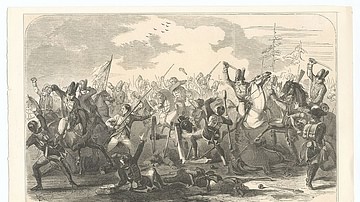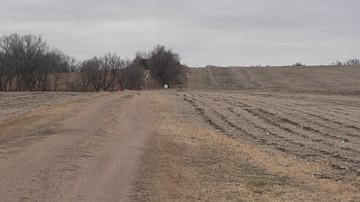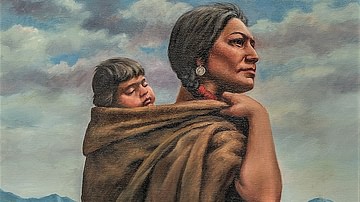Search Articles
Browse Content (p. 22)

Article
Childbirth in Ancient Rome
Childbirth in ancient Rome was considered the main purpose of marriage. Roman girls married in their early teens, and in elite society, some married before they reached puberty. The legal age for marriage was 12 for a girl; 15 was accepted...

Article
Battle of Waxhaws
The Battle of Waxhaws (29 May 1780) was a small engagement during the southern theater of the American Revolutionary War (1775-1783) that nevertheless had a significant psychological impact on the Patriots. During the battle, Lt. Colonel...

Article
Battle of the Ruhr
The Battle of the Ruhr or the Ruhr Air Offensive (March-July 1943) was a sustained bombing campaign by the British and the United States air forces against the industrial heartland of Germany during the Second World War (1939-45). The offensive...

Article
The Bear Man
The Bear Man is a Pawnee legend exemplifying the Native American understanding of the natural world and serving as an origin tale for the Bear Dance, which was performed to awaken the bears in spring from their winter hibernation and also...

Article
The Boy Who Was Sacrificed
The Boy Who Was Sacrificed is a legend of the Pawnee nation highlighting the belief that everything happens for a reason according to the will of Ti-ra'wa ("Father Above"), the supreme creator, and how even the smallest creatures have an...

Article
The Bombing of Berlin
The bombing of Berlin, aka the Berlin Air Offensive or Battle of Berlin (Air), was a sustained bombing campaign on the German capital by the British Royal Air Force and United States Air Force from November 1943 until March 1944. The objective...

Article
Twelve Famous Native American Women
Native American women are traditionally held in high regard among the diverse nations, whether a given people are matrilineal or patrilineal. Traditionally, women were not only responsible for raising children and caring for the home but...

Article
Weapons in the American Revolution
The American Revolutionary War (1775-1783) was a long and bitter conflict fought between Great Britain and its thirteen North American colonies over the Americans' liberties and, eventually, for the independence of the United States. The...

Article
How the World Was Made: A Cherokee Creation Story
How the World Was Made is a creation story of the Cherokee nation, which, like many such tales of the Native peoples of North America, begins with a world covered by water from which dry land is formed and natural order created by beings...

Article
The Schweinfurt-Regensburg Raids - The US Bombing of Germany's Ball-Bearing Factories
The Schweinfurt-Regensburg raids in Germany were a series of attacks by B-17 Flying Fortress and B-24 Liberator bombers of the United States Air Force in August and October 1943 during the Second World War (1939-45). Schweinfurt had several...